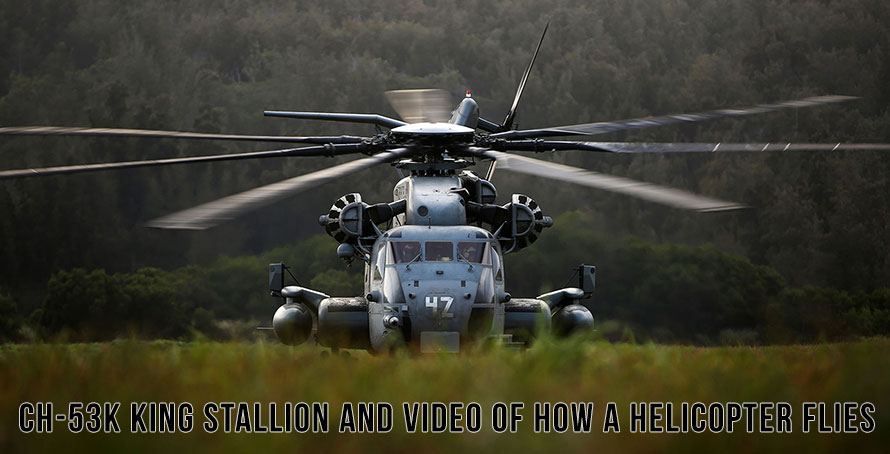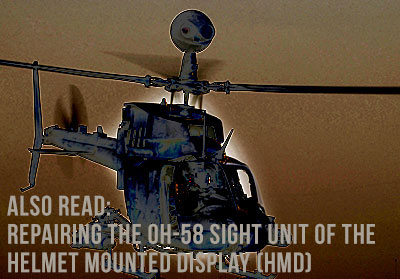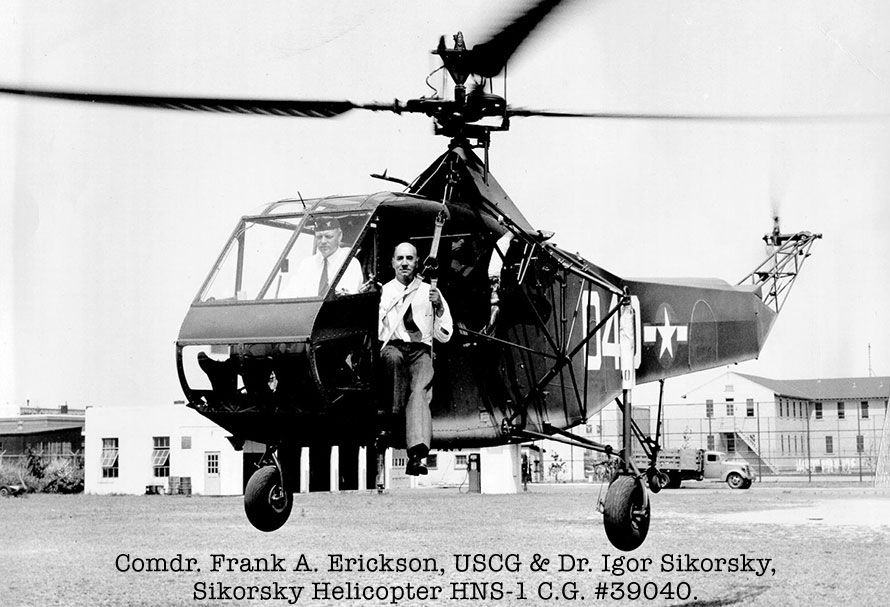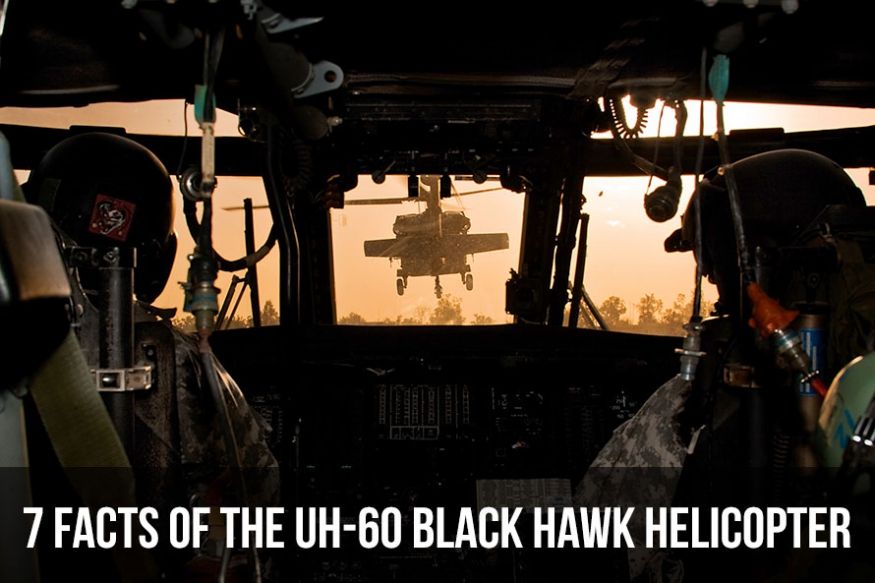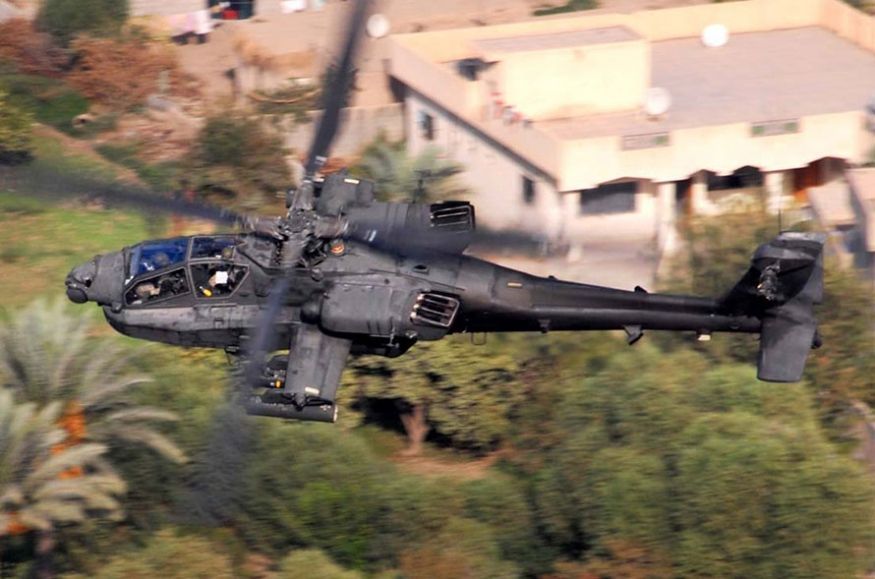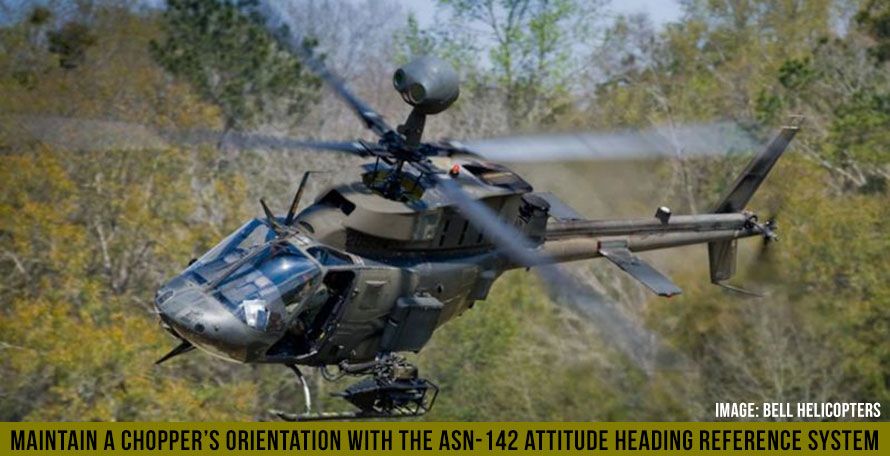The CH-53 Sea Stallion has served the U.S. military as its heavy-lift helicopter since 1966. Through the last five decades, it has seen many upgrades to its carrying ability and performance. The CH-53 has transported personnel and carried heavy cargo from Vietnam through present day conflicts. Since its introduction into service, it has been operated by the United States Navy, Marine Corps, and Air Force. Along with the United States, primary operators of the CH-53 are Germany, Israel, and Mexico.
The CH-53 has undergone several upgrades to improve performance aspects of the craft. The CH-53A was the original Marine Corps variant, but a D model upgrade introduced in 1969 included folding rotor blades, more powerful power plants and transmissions, and an increased cabin size taking troop capacity from 38 to 55. The 53A had 6 blades on the main rotor and possessed 2 GE turboshaft power plants that produced 2,850 shp each. The CH-53A could carry 8,000 lbs of cargo internally or 13,000 lbs externally. With the engine upgrades of the 53D, each turboshaft power plant provided 3,925 shp. The D version would also include IR countermeasures and chaff dispensers.
In 1981, Sikorsky added a third engine and a seventh blade, developing the CH-53E Super Stallion. Along with main blade additions, the CH-53E had a tail rotor canted 20 degrees to contribute to lift. Since both the Super Stallion and the UH-60 Black Hawk, another Sikorsky medium-lift helicopter, carry heavy loads, this canted rotor assisted with lift, especially during hover or when slowly moving forward. This newer version of CH-53 is utilized by the U.S. Marine Corps, U.S. Navy, and the Japanese Maritime Self-Defense Force.
Watch video: How Does a Helicopter Fly?
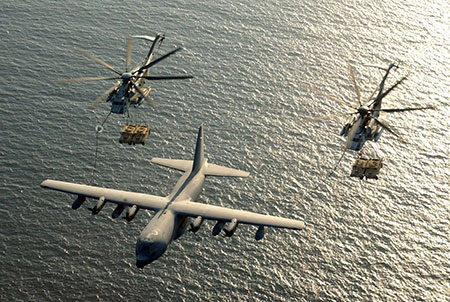
A pair of Super Stallion helicopters receive fuel from a KC-130 Hercules while transporting Humvees over the Gulf of Aden
The performance capabilities of the CH-53E greatly increased with the new additions. The Super Stallion could now carry 30,000 pounds of cargo or 36,000 externally from a single sling hook. It also contains night vision systems, GPS, Doppler radar, FLIR, and chaff and flare dispensers for defense. Like the CH-53A and D, the CH-53E has a four crew — a pilot, copilot, crew chief and a helicopter mechanic. It is fitted with two door-mounted .50 BMG GAU-15/A machine guns.
The CH-53E Super Stallion is just over 99 feet in length, compared to the earlier CH-53D which was 88 ft 6 inches in length. The Super Stallion has a maximum speed of 196 mph and a range of 621 nmi. It can lift an eight-wheeled Light Armored Vehicle (LAV) and even a 155 mm Howitzer with ammunition and crew.
With the final of the 234 heavy lift cargo Super Stallion being produced in the 1980s, the 35-year-old airframe is in need of updating to remain airworthy. Sikorsky developed the CH-53K King Stallion to replace the CH-53E. This was expected to begin in 2009 but is now set to begin in 2018.
The CH-53K boasts three turboshafts that produce 7,500 shp each. The K will be able to fly 23 mph faster than the E version. With more powerful engines and new composite rotor blades, the CH-53K substantially increases payload capacity over the CH-53E. The K aircraft cabin will be 15% larger than its predecessor and have a new digital glass cockpit with electronic flight instrument LCD screens displays.
Even with the implementation into service this year of the CH-53K, the 53Es will remain in service for a while as the new King Stallions are produced and phased into service. The primary user of the CH-53K will be the U.S. Marine Corps, which has a current order of 200. With its heavy-lift capability and its effectiveness to operate from a ship and deliver 55 Marines ashore quickly, the CH-53 is a very important tool for the Marines to complete their mission.
If maintained well, a helicopter can have a long service life. As the helicopter ages, so do the electronics the pilot depends on to keep it flying. Upgrading or completely replacing those avionics systems can be out of the budget for many militaries, government, and civilian operators. Even with tight funding, these systems must be maintained. Another option for supporting the aging and obsolete systems is repair or overhaul of the electronic and electromechanical equipment of the aircraft.
Duotech Services solves the engineering, reverse engineering, repair and re-manufacturing problems of military and civilian agencies as well as aerospace and commercial users of electronic and electromechanical equipment in rotary wing aircraft. Along with the CH-53, other platforms Duotech supports include the OH-58 Kiowa, UH-1 Huey, UH-60 Black Hawk, AH-1 Cobra, and AH-64 Apache. Duotech provides high-quality services to our customers within the budgeted schedule, maintains an AS9100D registration, and is a qualified repair station for thousands of items. You can begin your Part Number Search or request a repair quote from Duotech today.

